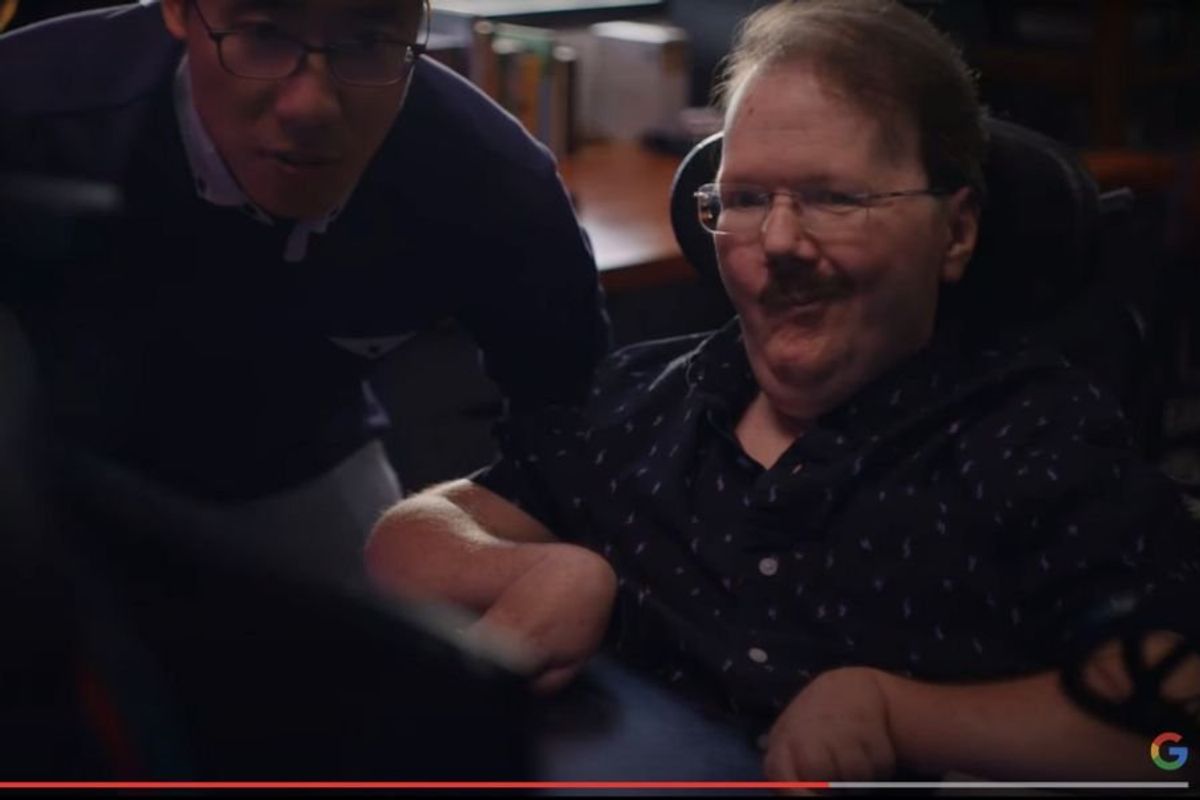
Scientific discoveries and technological advancements have always been a double-edged sword. Nuclear fission gave us a powerful source of clean energy and as well as the most destructive weapons humanity has ever seen. The internet gave us unparalleled access to the entire library of human knowledge and also unparalleled exploitation and porn. Social media has connected people around the world in ways previous generations barely dreamed of and also resulted in a toxic online culture that threatens to shred the fabric of society.
Now, after several dozen movies imagining the best and worst-case scenarios, we’re at that fork in the road with Artificial Intelligence. The sudden leap in AI tech hitting the mainstream has us all wondering what comes next. But for all the AI fear and uncertainty, there are some pretty incredible, humanity-boosting ways it is being used that may signal some hope for that future.
For instance, AI is allowing facial expressions to control computers. Case in point: a project inspired by quadriplegic video game streamer Lance Carr, whose rare form of muscular dystrophy only allows him to control his face and head movements. Carr had been using a head-tracking mouse (an expensive piece of accessibility equipment controlled by head movement) for gaming, but after his house caught fire during a livestream on Twitch in 2021, he lost everything.
“Video games are my link to the world,” Carr explained in a video describing the project. “But I had to stop gaming because this house burnt down along with my adaptive equipment.”
Carr got connected with some folks at Google to co-design Project Gameface, a fittingly-named tool that allows users to use facial movements as game controls. Linking several different AI models together, the project uses a mesh of 468 points on your face and converts them into telemetry to make mouse movements and clicks. For instance, raising your eyebrows can make the mouse drag or click and opening your mouth can move the cursor.
The best part is that since the project is open source and only requires a webcam for input, it will be widely accessible to people who want or need to use it. And for those who don’t have full use of their limbs, it may be a game-changer as it has been for Carr.
“Muscular dystrophy takes, and this actually added an ability,” he said. “So it’s the first time I’ve gained something in a physical sense.” He shared that the technology is so precise that he’s able to write his name in cursive using only his face through a webcam.
Watch:
Though Google says it’s still in development, they have made it available for preview through GitHub for people who want to give it a spin and help contribute to its improvement.
The potential dangers of AI may be making people nervous, but let’s be sure not to throw the baby out with the bathwater. In the hands of people who are focused on helping humanity progress wisely and responsibly, AI can be a powerful, life-changing tool that makes people’s lives better.
As Lance Carr said, “My hope is to definitely give this technology to everybody who could use it,” the gamer added. “I just want to make a lot of people’s lives better and easier.”
Here’s to those using ever-advancing technology for good.
